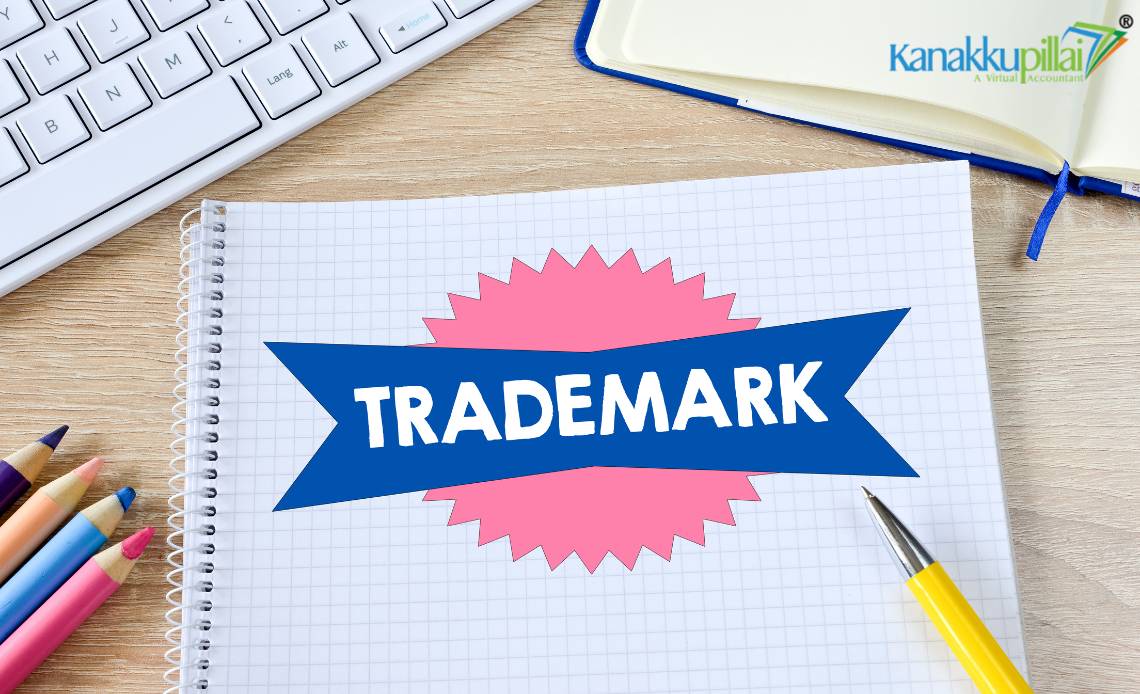Creating a unique brand identity has become an essential need of the hour in today’s fast-paced world to differentiate oneself from competitors. A trademark registration, which formally safeguards the distinctive qualities that characterise a business’s goods or services, is one of the most effective instruments for accomplishing this. In the past, well-known components such as phrases, logos, and visual symbols made up trademarks. However, since branding and marketing tactics have changed, businesses are increasingly searching for more creative ways to set themselves apart, which has resulted in the growth of trademark protection. Today, trademarks can incorporate non-traditional components like sounds, colours, and even scents in addition to names and emblems. These non-traditional trademarks give companies the chance to safeguard more imaginative facets of their brand. If you want to stay ahead of the market, understanding the full spectrum of trademark options is key to fostering recognition and loyalty among the target customers.
In this blog, we shall understand the meaning of conventional and non-conventional trademarks and the detailed difference between the two.
Conventional Trademarks
Legal statutes do not specifically define trademarks as conventional and non-conventional. The division is a practical outcome of how different types of marks are handled in legal and administrative processes worldwide. Conventional trademarks are the traditional forms of marks used to identify and distinguish goods or services. The main characteristic of the conventional trademark is that it can be easily represented on a piece of paper, like you can represent a word mark, music notes, etc. The following are included in the conventional trademarks:
1. Product Marks
A product mark is a trademark explicitly used to identify a product to distinguish the goods of one manufacturer or seller from those of others. For example, “Colgate” is for toothpaste, and “Nike” is for athletic footwear. Applications for a trademark registration filed under Class 1-34 IV Schedule under the Trade Marks Act, 1999.
2. Service Marks
Service marks function similarly to product marks but are used to identify and distinguish services rather than goods. They help consumers recognize the source of a service and thus help differentiate it from competitors. They are primarily used in advertising products. Applications for trademark registration are filed under Class 35-35.
3. Word Mark
It consists of words, letters, numerals, and combinations of these to identify the products and services of a company. Word marks are used when your product is text-based, only letter-based, or just your business name. For example, Coca-Cola, Nike, and McDonald’s.
4. Collective Marks
Collective marks are used by members of an association, cooperative, or other collective group to certify that their products or services meet specific standards set by the group. These marks are owned by the collective organization and used by its members to signify membership or adherence to the group’s standards. For instance, the mark “CA” is used by members of the Institute of Chartered Accountants to denote certified professionals.
5. Certification Marks
Certification marks are used to certify that goods or services meet certain standards or possess specific characteristics, such as quality, origin, or manufacturing methods, established by a certifying authority. Unlike collective marks, certification marks are not used by the owner but are licensed to others who meet the established criteria. Examples include “FSSAI” for food safety standards and “Agmark” for agricultural products in India.
Non-Conventional Trademarks
With the rise of globalisation and digital technology, businesses began experimenting with sensory branding, which resulted in the emergence of marks that were not simply visual. To set their brands apart, the businesses started utilising unusual colour schemes, noises, and shapes. Among the non-traditional trademarks are:
1. Colour Marks
Colour marks include the use of specific colours or combinations to distinguish goods or services. The colour mark has to acquire distinctiveness through long-term, exclusive use in such a manner that the consumers associate that specific colour with a particular brand or source. For example, the distinctive purple colour Pantone 2685C is used by Cadbury for its chocolate packaging.
2. Sound Marks
Sound marks consist of unique sounds or jingles associated with a brand. In India, the registration of sound marks requires a graphical representation or a sound wave representation, such as the popular Nokia tune.
3. Shape Marks
Shape marks protect the distinctive shapes of products or their packaging. It is pertinent to note that the shape must serve as a brand identifier and not provide technical or utilitarian purpose to the brand. For example, the Coca-Cola bottle and the Toblerone chocolate have unique shapes.
4. Pattern Marks
Pattern marks include distinctive designs and arrangements of designs, as well as a pattern capable of identifying one’s goods or services and distinguishing them from those of another. They can also include textile patterns or decorative designs that become synonymous with a brand. For example, the distinctive pattern of the Louis Vuitton monogram.
5. Scent (Olfactory) Marks
Scent marks are one of the most challenging to register due to difficulties in graphical representation and subjective perception. There is no universally accepted method to visually depict a scent because it cannot be adequately represented graphically, and its perception can vary among individuals. A popular example is the PIÑA COLADA scent used to coat Ukuleles.
6. Motion Marks
Motion marks include moving images or sequences that serve as brand identifiers. These can be represented graphically by depicting a series of still images that show the sequence of motion. Examples of moving marks are the Columbia Pictures logo and the Microsoft Windows logo.
Difference Between Conventional Trademarks and Non-Conventional Trademarks
| Conventional Trademarks | Non-Conventional Trademarks |
| These traditional marks identify and distinguish goods or services. It is comprised of words, logos, and symbols.
For example, Google, Nike, Apple’s apple symbol, etc. |
These are innovative marks that identify and distinguish goods or services but are not traditionally recognized, including sounds, colours, shapes, and more.
For example, Nokia’s ringtone, Toblerone’s triangular chocolate bar, the scent of Chanel No. 5 perfume, etc. |
| They are easily represented through standard images, words, or symbols. | It is challenging to represent them graphically as they are not traditionally recognized, including sounds, colours, shapes, and more. |
| They are recognized and identified based on visual elements like design and text. | They are recognized through sensory experiences beyond sight, such as hearing a particular sound or associating a specific colour with a brand, which enhances brand recall and emotional connection. |
| It must be distinctive enough to identify the source of goods or services. | As they are not inherently distinctive, a colour mark must acquire distinctiveness through use. For instance, a colour mark must be shown to be associated with a particular brand in the minds of consumers. |
| They serve as identifiers as they are used to ‘identify,’ not ‘dictate,’ the nature of goods or services. | They serve as identifiers of the products and services. |
| Easy to register and protect provided that they meet the distinctiveness criteria. | It is difficult to register as it faces higher scrutiny during registration due to challenges in graphical representation and proving acquired distinctiveness. For instance, scent marks are difficult to register because they cannot be graphically represented in a precise and universally understandable manner. |
| Easy to sue for infringement as any similarity in design, wording, or symbols is easily identifiable. | In comparison to a conventional trademark, the case for infringement is subjective and needs a detailed holistic analysis of the distinctiveness, market use, and consumer perception. |
Conclusion
Businesses are constantly looking for new and creative methods to set themselves apart, which makes it more and more crucial to comprehend and safeguard both traditional and non-traditional trademarks. Non-traditional trademarks provide particular difficulties in registration and enforcement, even though they provide distinctive branding potential. It takes a deep research of trademark laws all over the world and a calculated strategy for brand protection to negotiate these complications successfully.
Related Services
Frequently Asked Questions
1. What are conventional trademarks?
Conventional trademarks are traditional identifiers such as words, logos, and symbols that distinguish goods or services. They are easily represented graphically and meet legal requirements for trademark registration.
2. Can non-conventional trademarks be registered?
Yes, non-conventional trademarks, including sounds, colours, shapes, scents, and motions, can be registered. However, they must acquire distinctiveness through use, as they are not inherently distinctive.
3. How does the registration process differ between conventional and non-conventional trademarks?
Conventional trademarks are generally easier to register due to explicit graphical representations. In contrast, non-conventional trademarks face higher scrutiny during registration because of challenges in graphical representation and proving acquired distinctiveness.
4. How can a color become a trademark?
A colour can serve as a trademark if it is distinctive and associated exclusively with a brand. For example, the specific shade of purple used by Cadbury for its chocolate packaging is trademarked.
5. What are the challenges in registering a scent trademark?
Scent trademarks are difficult to register due to challenges in representing them graphically on a piece of paper. Smell is a subjective perception that varies from person to person, and there is no universally accepted method of depicting a scent visually.
6. Can motion be trademarked?
Yes, motion marks, such as animated logos or sequences, can be trademarked. However, they must be represented graphically, often through a series of still images depicting the motion.
7. How does the distinctiveness requirement differ between conventional and non-conventional trademarks?
Conventional trademarks must be inherently distinctive, allowing consumers to recognize their source immediately. However, non-conventional are not inherently distinctive. They usually don’t immediately tell consumers where they come from, so they must acquire distinctiveness over time through extensive use. For example, the Nokia ringtone sound became associated with Nokia after the public saw it repeatedly used by the Nokia brand.
8. Why are non-conventional trademarks considered innovative?
They engage multiple senses beyond sight, such as hearing a particular sound or associating a specific colour with a brand, enhancing brand recall and emotional connection.





